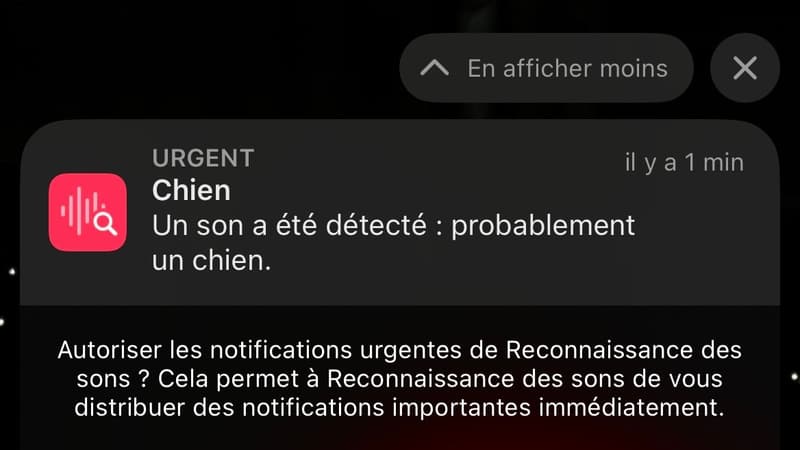This is one of those hidden iPhone tools that few users know about but that can be very useful: the “Sound Recognition” tool. This tool is part of the entire range of functionalities dedicated to improving the accessibility of the brand’s smartphones, such as AssistiveTouch, VoiceOver or subtitles, for people with disabilities.
“Sound recognition” allows people who are deaf or hard of hearing (or those who have headphones and can’t hear what’s going on around them) to be notified if a particular noise occurs.
For example, it is possible to get a notification in case an alarm is triggered, ranging from a fire alarm to a smoke detector or a simple house doorbell (the sound of a door slamming is also available).
15 types of recognizable noises
Users can also activate notifications for more specific noises, such as meowing cats or barking dogs, screaming and crying children, coughing fits, or even making kettle noises.
To define all these settings, go to the iPhone settings, then to the “Accessibility” section, and then to “Sound recognition”. Once the feature is enabled via the toggle button, the user is prompted to adjust the sounds they want to know are present.
A total of 15 types of noise are selectable by the user, being able to decide for each one whether or not to activate notifications. The tool also adapts to the particularities of each person since it is possible to enter a particular noise to convert it into a personalized sound, for example with an oven noise, a microwave noise or another type of appliance tone.
To customize an alarm, simply place iPhone next to the noise you want to detect, then record without your parasite around you. Once the configuration is done, the user will receive a push notification in case the device recognizes a noise, indicating for example: “A sound has been detected: probably a dog”.
However, Apple specifies that this tool is not responsible in case of lack of notification: “Do not wait for your iPhone to recognize sounds in circumstances where you risk injury, in dangerous or emergency situations, or even in a navigation”. context”.
Source: BFM TV


